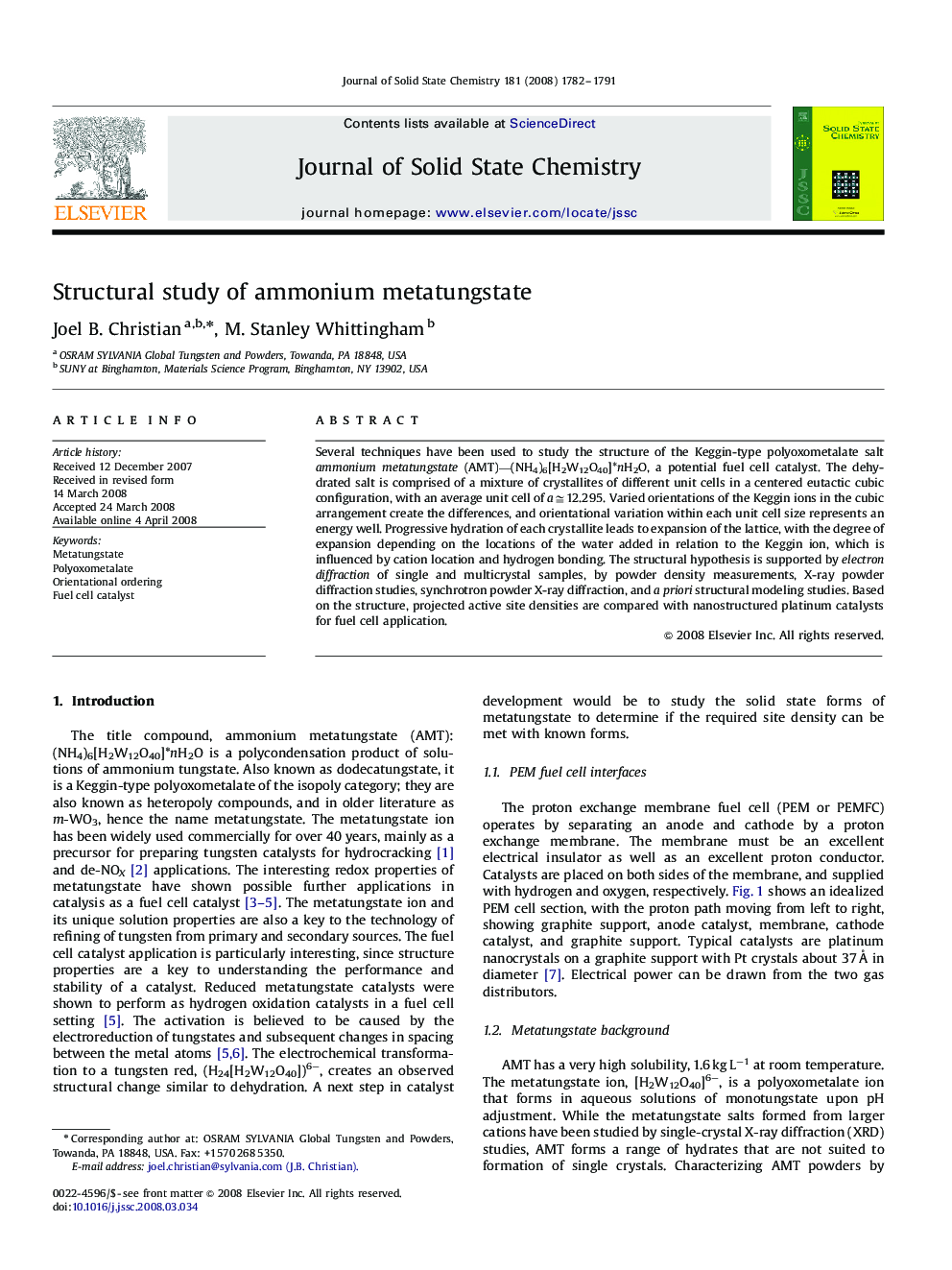| Article ID | Journal | Published Year | Pages | File Type |
|---|---|---|---|---|
| 1332155 | Journal of Solid State Chemistry | 2008 | 10 Pages |
Several techniques have been used to study the structure of the Keggin-type polyoxometalate salt ammonium metatungstate (AMT)—(NH4)6[H2W12O40]*nH2O, a potential fuel cell catalyst. The dehydrated salt is comprised of a mixture of crystallites of different unit cells in a centered eutactic cubic configuration, with an average unit cell of a≅12.295. Varied orientations of the Keggin ions in the cubic arrangement create the differences, and orientational variation within each unit cell size represents an energy well. Progressive hydration of each crystallite leads to expansion of the lattice, with the degree of expansion depending on the locations of the water added in relation to the Keggin ion, which is influenced by cation location and hydrogen bonding. The structural hypothesis is supported by electron diffraction of single and multicrystal samples, by powder density measurements, X-ray powder diffraction studies, synchrotron powder X-ray diffraction, and a priori structural modeling studies. Based on the structure, projected active site densities are compared with nanostructured platinum catalysts for fuel cell application.
Graphical abstractThe structure of ammonium metatungstate powders are highly dependent on hydration and POM molecule rotation, with cation and hydrogen bonding forces directing a mixture of structures that have been studied with bulk and single-crystal methods. The illustration shows Monte Carlo simulated anion structural disorder for the fully dehydrated form of the title compound.Figure optionsDownload full-size imageDownload as PowerPoint slide
